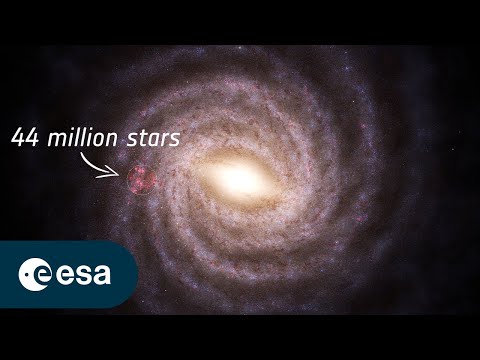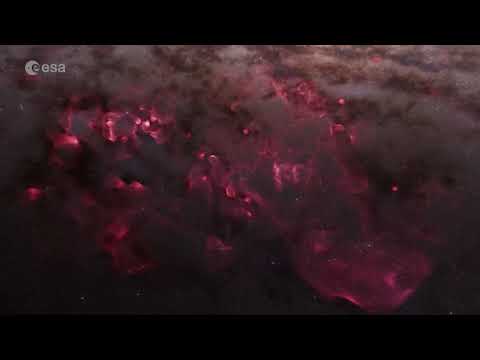A new 3D map can take you 4,000 light years from the sun–without leaving Earth. This first-of-its kind project from the European Space Agency’s (ESA) Gaia mission encompasses over 44 million stars, massive plumes of ionized dust, and regions of immense cosmic energy. But as large as the map already is, its designers are already planning to expand it even further.
It’s relatively simple enough to see what the Milky Way looks like from Earth. But with a diameter of around 100,000 light-years, it’s unlikely that humanity will glimpse the galaxy from an outside perspective anytime soon. However, accurately envisioning what it looks like isn’t impossible. From July 2014 to March 2025, the Gaia mission mapped our cosmic neighborhood by surveying every detectable star and nebula. Now, scientists have utilized Gaia’s galactic data to create the most accurate 3D map of its kind. But it wasn’t as simple as pinpointing all those stars.

Stellar nurseries are extremely difficult to chart because their stars are generally obscured by dense clouds of dust and gas. At the same time, astronomers can utilize that same murkiness to their advantage. Gaia’s space observatory was capable of measuring stellar positions by way of the “extinction” of stars. In this case, “extinction” refers to the amount of light that is blocked by all that cosmic dust. Once they measured the star’s extinction, the team then rendered those dusty regions into a 3D map which they could chart for ionized hydrogen gas. Areas with higher levels of ionized hydrogen are known as clear indicators for nearby stars.
In addition to 44 million “ordinary” stellar objects, the new map contains 87 O-type stars. These rare, massive cosmic entities are early in their lifespans, but also burn brightly at extremely high temperatures. An O-type star’s UV light emissions are so powerful that they even tear electrons from the hydrogen atoms they hit, creating even more noticeable ionized gas.
“There has never been a model of the distribution of the ionized gas in the local Milky Way that matches other telescope’s observations of the sky so well,” astronomer and study co-author Lewis McCallum said in a statement. “That’s why we are confident that our top-down view and fly-through movies are a good approximation of what these clouds would look like in 3D.”

McCallum and colleagues have already noticed new peculiarities about O stars and the regions in which they are born. Based on additional analysis, it appears that some of the star-forming clouds have broken open, creating a giant cavity that’s being filled by dust and gas.
“This map nicely shows how radiation of massive stars ionizes the surrounding interstellar medium and how dust and gas interact with this radiation,” added astronomer Sasha Zeegers.
The new map features detailed views of the California Nebula, North American Nebula, Gum Nebula, and the Orion-Eridanus superbubble, but it won’t end there. According to the Gaia team, the plan is to integrate the next dataset into their model currently scheduled to release in December 2026. With that new information, the team believes the map can be expanded even further while including even larger and higher quality data.






